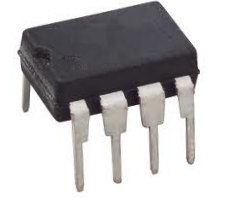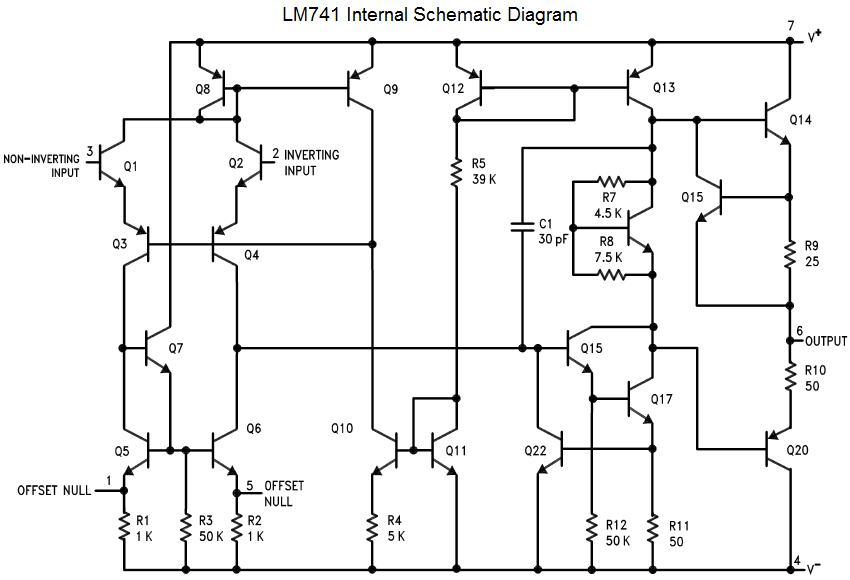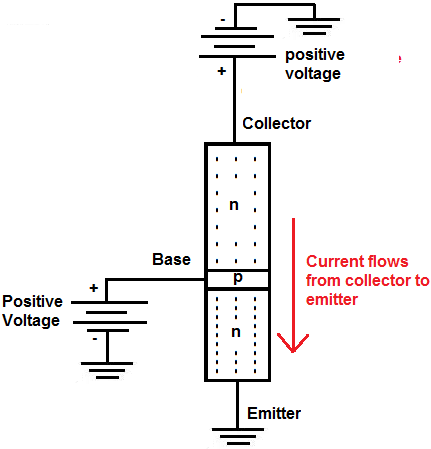Why Does an Op Amp Need a Power Supply?

An op amp needs a power supply because internally it is composed of a number of transistors.
Below is the insides of a typical op amp chip, in this case, a LM741:

If you know the schematic diagram for a transistor, which is,  , you see the enormous amount of transistors which makes up
an op amp.
, you see the enormous amount of transistors which makes up
an op amp.
To understand why an op amp needs a power supply, you have to understand transistors and how they are connected and why they need power to operate, because an op amp is just a chip composed of many transistors.
So to understand op amps, we have to go over the connection of NPN transistors and explain why they need a power supply in order to function. We'll start below.
A NPN transistor is a transistor which is made up of 3 regions, the base, the emitter, and the collector. The collector and emitter regions
are made up of n-type material, which means they are predominately filled with electrons. And the base is made up of a p-type material. They are
dominantly made up of holes.

To understand a NPN transistor, we have to go over how current flows through it.

The positive voltage that is given to the collector region of a NPN transistor is called reverse biased voltage. It is necessary in order to let current flow from the collector to the emitter region. Without this positive voltage to the collector, current flow in a transistor would not occur. Positive voltage must always be added to the collector of an NPN transistor. (For PNP transistors, it's the opposite. Negative voltage is applied to the collector region, since it is made mostly of holes). Negative voltage is applied to the base of the transistor. When this occurs, the holes in the NPN transistor are attracted to and flow out of the base region. This depletes the base region, smaller and smaller, until the electrons in the emitter region have enough escape power to power through the barrier into the collector region and then out of the transistor.
Since op amps are composed of many transistors, it needs this positive voltage applied to the collector to cause current to flow from the collector to emitter region.
So positive voltage to an op amp is a must. Many op amps, which are called dual power supply op amps, including a LM741, also need negative voltage to operate.
Related Resources
What is an Ideal Op Amp
Why Does an Op Amp Need a High Input Impedance and a Low Output Impedance?
What is the Difference Between a Single and Dual Supply Op Amp?
How to Connect a LM741 Op Amp Chip to a Circuit
Op Amp Gain Calculator
Voltage Follower
When a Circuit Needs Buffering
